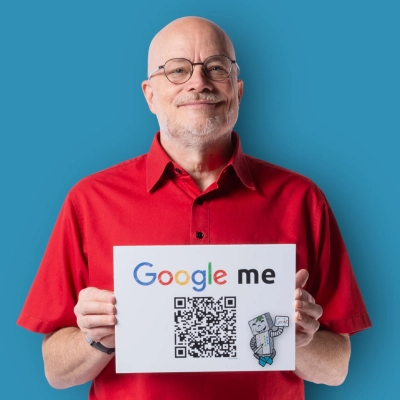7 Metrics to Measure Brand Storytelling Impact
Brand storytelling has become a crucial aspect of modern marketing strategies. This article delves into the key metrics that can effectively measure the impact of your brand's narrative, drawing insights from industry experts. From blending metrics with emotional resonance to leveraging AI algorithms, discover how to quantify and enhance your brand's storytelling success.
- Blend Metrics with Emotional Resonance
- Community Engagement Reveals Brand Impact
- Measure Trust Through Engagement and Referrals
- Track Story-Driven Leads for ROI
- Count Brand Mentions in Inbound Leads
- AI Algorithms Reflect Brand Narrative Success
- Monitor Brand Gravity Indicators
Blend Metrics with Emotional Resonance
Honestly, I look at brand storytelling impact differently than pure performance marketing. For me, it's not just "Did this ad get clicks?" but "Is our story living in people's heads and hearts?"
Of course, I still track numbers like branded search growth, how much our share of voice in the market is increasing, and engagement on storytelling-driven content. If our About Us page suddenly has people spending twice as long on it, or if we see more social mentions using our brand values or language, I know the story is sticking.
But the real magic is in the qualitative signals. When I hear a customer describe our brand back to me in their own words, and it's exactly the story we wanted to tell, that's gold. When reviews or user-generated content mirror our narrative without us prompting it, I know we have moved from "marketing" to "meaning." Even employees start naturally telling the story, which is a huge sign the brand narrative is not just in the deck but in the culture.
So for me, it's a mix of the hard metrics that make sure we're moving the needle and the softer indicators that tell me the story is becoming part of how people actually talk about us. When those two line up, that's when I know we've nailed it.

Community Engagement Reveals Brand Impact
The most telling metric for our brand storytelling's impact is the depth of community engagement.
Clicks and impressions are easy to manipulate, but genuine connection? That's earned. When our audience at Novoresume actively engages, it demonstrates that our narrative isn't just seen; it resonates, building real bonds.
We bypass vanity metrics and focus on what truly matters. Quantitatively, we track comments per post, particularly thoughtful ones, not just likes, showing that our story sparks dialogue.
We also examine shares with added context, such as someone posting, "This advice was a game-changer," transforming them into advocates. Unsolicited mentions on Reddit or X, recommending Novoresume, prove that our "trusted partner" narrative is effective.
Qualitatively, we delve deeper. Are mentions echoing our themes of confidence, support, and empowerment?
When job seekers tag us in "I got the job!" posts, they become heroes in our story. Deep, vulnerable comments or thoughtful questions in threads demonstrate how we are building a thriving community.
This engagement shows we're not just a provider of tools like resume templates or cover letter templates, but a brand people want to genuinely engage with.
For us, it's the truest measure of loyalty and long-term impact.

Measure Trust Through Engagement and Referrals
I evaluate brand storytelling impact through metrics that extend beyond basic clicks and impressions. The brand narrative at Paramount focuses on hope, transformation, and recovery, so I measure success through engagement metrics which demonstrate trust and connection. Our team tracks how long visitors stay on program overview pages and their bounce rates following patient testimonial readings. The length of time visitors spend reading stories indicates that the narrative has successfully connected with them. The spread of our authentic story becomes evident through referral sources from community partners and alumni.
I suggest conducting surveys with clients before and after their treatment to determine their referral sources and identify which messages attracted them to our services. The collected survey responses enable us to enhance our future marketing campaigns by ensuring our narrative reaches people emotionally and drives meaningful action.

Track Story-Driven Leads for ROI
I learned early on that storytelling metrics go beyond vanity numbers. When we launched our agency's "Small Business Success Stories" campaign, I tracked engagement depth rather than just reach. We measured story completion rates, comment sentiment analysis, and, most importantly, how many prospects mentioned specific story elements during sales calls. The breakthrough came when we noticed a 40% increase in qualified leads who referenced our client transformation stories. Now I always combine emotional resonance metrics with business outcomes to prove storytelling ROI.
Count Brand Mentions in Inbound Leads
For me, the biggest sign that our brand storytelling is working is when a customer tells me they chose us specifically because of a quality we've decided to emphasize in our branding and communications.
Since this type of feedback is more qualitative, it's hard to measure in the way conversion rate or cost per action is. One metric that I've found works well is counting the number of mentions we see about our PR and brand efforts in our inbound leads. Over time, this has increased as we've put more resources into getting our brand in front of our target audience.

AI Algorithms Reflect Brand Narrative Success
The ultimate measure of brand storytelling is how accurately Google and AI algorithms understand and repeat your narrative. At Kalicube, our primary KPIs are our clients' "AI Resume" in ChatGPT and "Brand SERP" on Google. The key question is: how closely does the AI-generated summary and the search result for your name match your intended brand message? We expect the Brand SERP to reflect strategic changes within 2-3 months, while the AI Resume on ChatGPT and Perplexity takes 6-12 months to fully align.

Monitor Brand Gravity Indicators
As both the CEO and CFO of Manor Jewelry, I measure the impact of brand storytelling not with direct-response metrics, but by tracking what I call "Indicators of Brand Gravity"—the signs that our brand is attracting people, rather than us having to constantly push our message out.
The most important quantitative metric I monitor is the growth in our branded search volume—the number of people who are searching directly for our brand name. This is the clearest signal that our narrative is creating recall and desire in the market.
On the qualitative side, the key indicator is the language we observe in our inbound client inquiries. When a potential client's first email to us uses specific words from our own brand story—phrases like "heirloom," "legacy," and "co-creation"—we know the narrative is resonating deeply. It's the ultimate proof that our story is not only being heard but is also building the emotional connection and trust that precedes a significant purchase.



